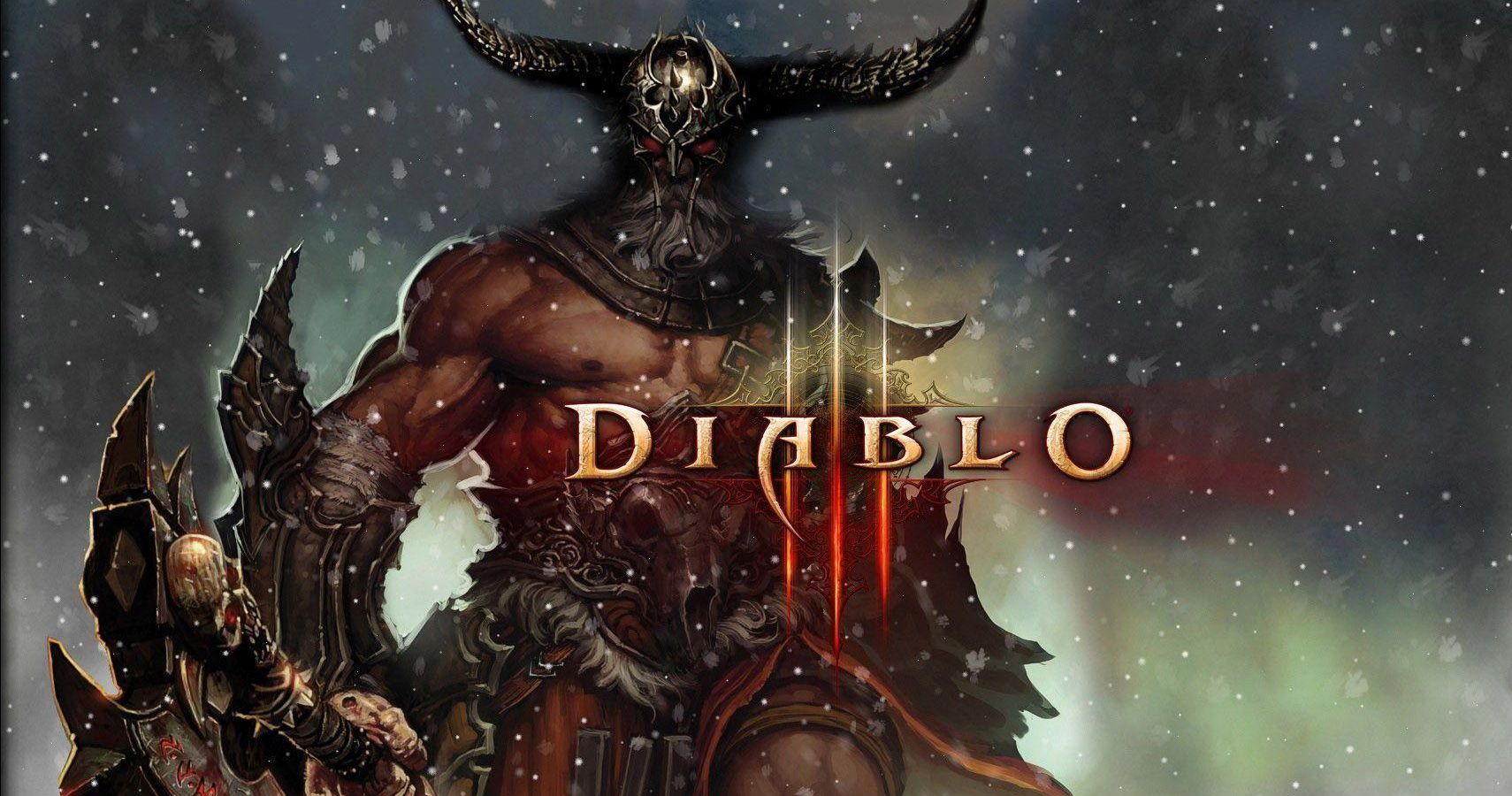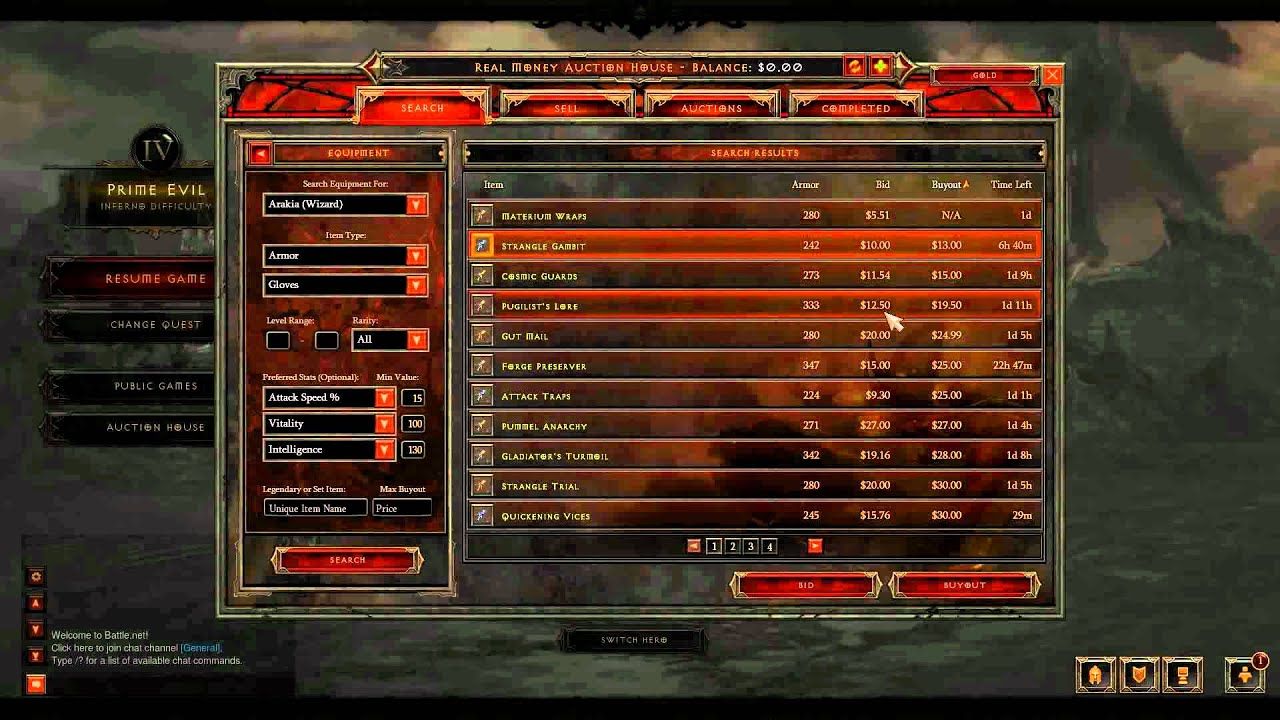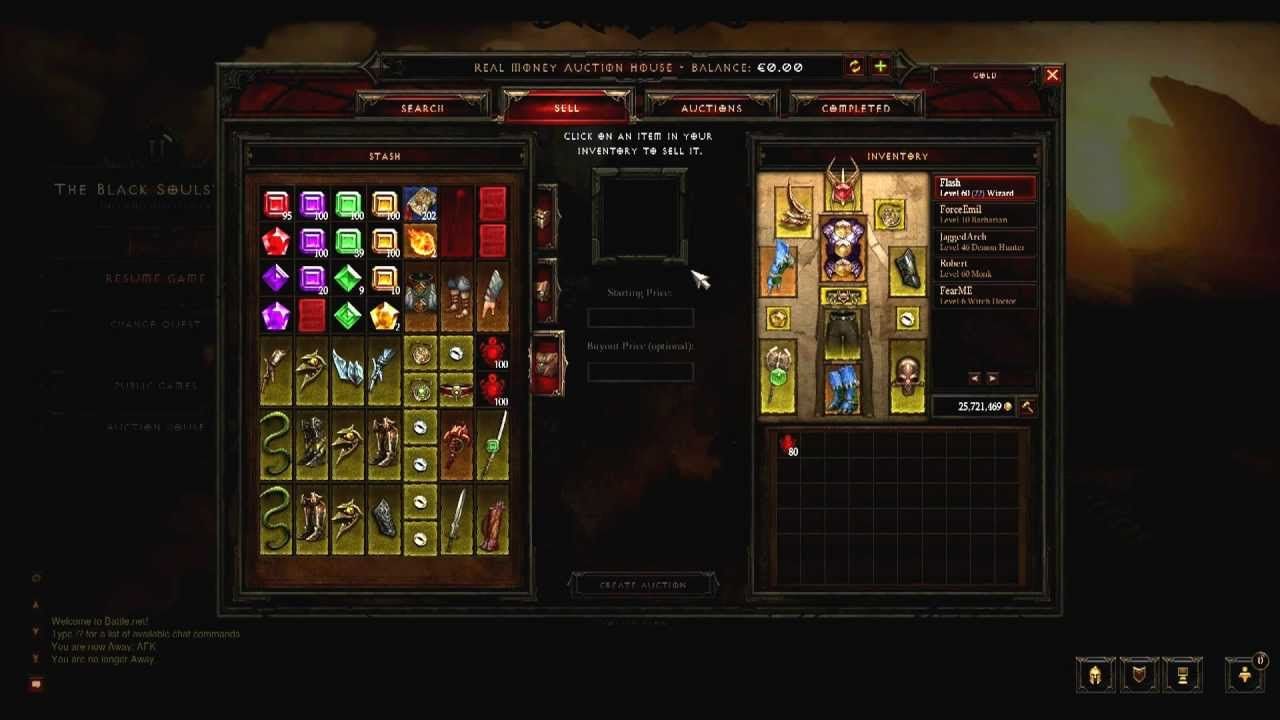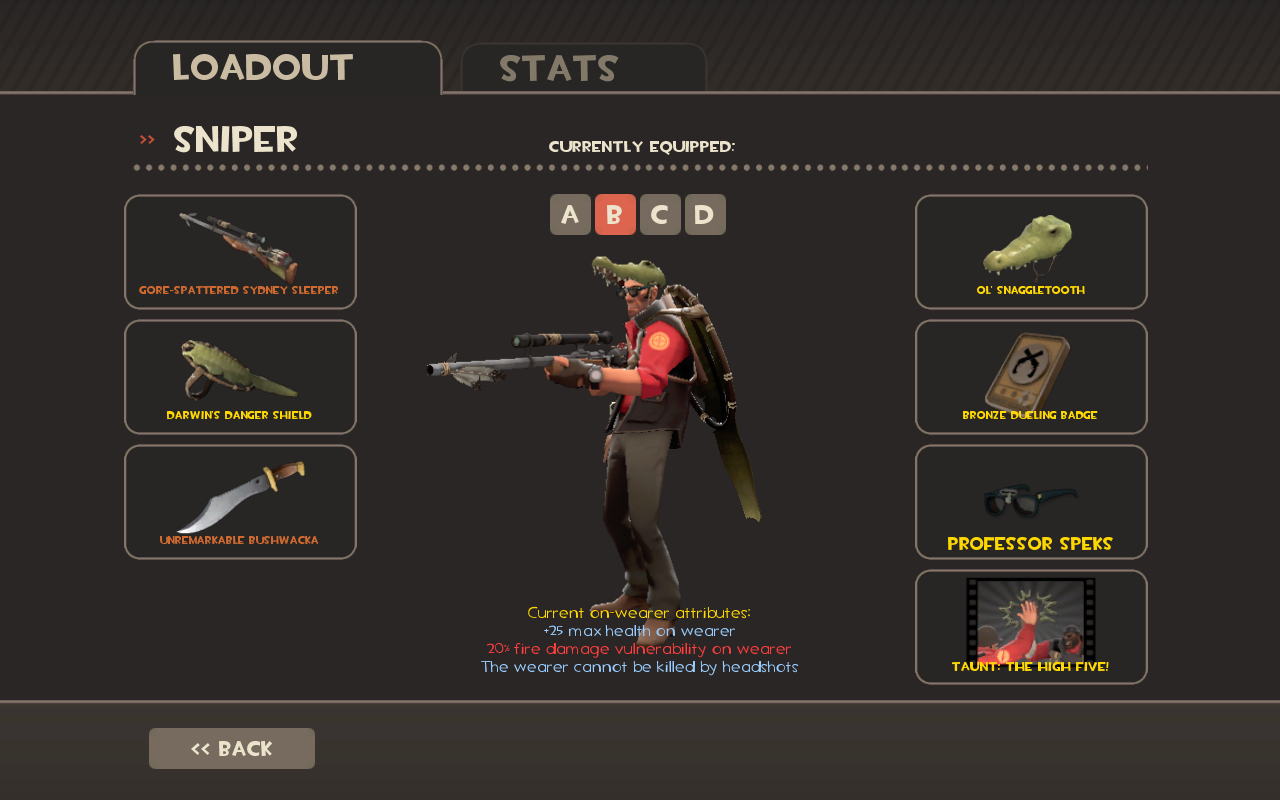If one were to look at Diablo 3 today without knowing anything about its development since releasing in 2012, they be fooled into thinking that it was a successful game, but in reality, it is a failure among its fellow Blizzard titles due to the disaster that was the Real Money Auction House (RMAH).
Today the game still has regular updates through its seasonal ladder resets, which are themed and often bring updates to class sets and items, but the game was supposed to be so much more, with a second full expansion and rumors of the Druid class sparked by in-game clues littered throughout the game. So, what exactly was the original vision for the game, and how did the Real Money Auction House fit into the evolution of Diablo 3?
What Was The Real Money Auction House?
As the name implies, the RMAH offered a user interface similar to that of the World of Warcraft auction house, where players were free to place items for sale priced either in the currency of in-game gold, that which dropped from enemies while playing the game, or through real money drawn from one’s battle.net account.
Why Was The Real Money Auction House Created?
The purpose of the RMAH was an attempt to respond to what users wanted while curbing external forces. Trading of in-game items on third-party marketplaces and in informal transactions between players was common in Diablo 2, as were many stories of being ripped off and having accounts hacked. By eliminating the need for such third parties, Blizzard hoped to give players what they wanted and also take a cut of those profits, which would have sustained the game in the long-term past the initial purchase of the game.
According to the former director of Diablo 3, Jay Wilson:
“The auction house came out of the desire to legitimize third party trading so that players would stay in the game to do their trading rather than go to third party sites, and as a result reduce fraud, scams, spamming, and the profit in hacking the game, making dupes, etc.”
What The Real Money Auction House Actually Did
The principle motivation for creating the RMAH seemed perfectly reasonable, but it shifted the way that players viewed the game at a fundamental level. Before, most players would simply play the game for the love of the demon slaying ARPG that they had come to love in Diablo 2, but soon economic forces took over.
Supply and demand were virtually non-existent for gear and armor before the introduction of the RMAH, at least to most players. The large majority would play the game normally, find drops of varying levels of rarity, and perhaps upgrade their gear and armor from time to time. Repeating this through subsequent playthroughs would result in a gradual upgrading of the character’s power overall, like all ARPGs and MMORPGs.
However, the RMAH removed that need to occasionally find the right item for an upgrade. Now, one simply needed to click on the RMAH tab and add the proper search parameters. Within a moment, one could find the perfect upgrade and see its price in gold or real money. A few more clicks and the transaction was complete.
The problem of course, was that this completely bypassed playing the game and finding loot for oneself in the traditional way.
Forget Slaying Demons, The Profit Lies In Supply And Demand
Blizzard would later affirm that many players were spending too much time trading on the RMAH instead of playing the actual game. In a sense, the RMAH was too successful, but unfortunately it drew a focus away from the core gameplay mechanics.
Particularly patient traders could become the most powerful of characters in the game without actually doing any fighting. So long as they were watching closely, buying low and selling high, there was no need to play the game, but they could still have the best items.
When the RMAH shut down, there were certainly players upset at the massive shift away from the model that Blizzard had so strongly embraced at the launch of the game, but the game was healthier for it, at least for a while.
Companies That Have Done This Properly
The idea of enabling some manner of free market economy in video games is not new, and some have done it quite well. In most ways, World of Warcraft’s auction house is not terribly unhealthy for the state of the game. In the recent race for a world first raid clear, top guilds Limit and Method revealed that they borrowed upwards of 100 million gold and cleared out the auction houses of three separate servers to have an edge over other guilds.
Steam has perhaps done trading of items between players best with Team Fortress 2, and in many ways this is because all of the items traded are cosmetic only, meaning that they provide no competitive edge to the wearer, whereas in Diablo 3 every item that was bought and sold directly impacted the power of a character. When Steam introduced their Marketplace for the sale of items from other games, they did so by limiting the real money to stay within a users Steam Wallet, whereas Blizzard allowed the RMAH to cash out to third parties.
How The Failure Of The Real Money Auction House Doomed Diablo 3
As stated, a casual observer may look at the current state of Diablo 3 and assume it was a successful game, but to Blizzard, the opposite is true. As discussed here, the cancellation of The King of the North expansion for the game was primarily attributed to Diablo 3 not bringing in enough ongoing revenue compared to games like Hearthstone, World of Warcraft, Overwatch, and Starcraft II.
All of those games encourage constant consumer spending with expansions and cosmetics at regular intervals throughout the year, but Diablo 3 no longer had any ongoing method of producing profit with the close of the RMAH. Since the experiment had failed so spectacularly but was integral to the long-term profitability of the game, there was little reason to continue pouring developmental resources into it.
Diablo 3’s Failure Might Ensure A Better Diablo 4
In developing Diablo 4, one must assume that Blizzard learned from their mistakes and will make a game that can sustain itself in the long term without the need for another RMAH. That may mean more attempts to sell items in game to consumers, but that is simply the reality of video game development that we see today.
While one hopes not to be nickel-and-dimed for everything in a game, the alternative is another Diablo 3, which while still entertaining today in short bursts, was apparently not nearly as much as it could have been.
Source: blog.hoard.exchange




